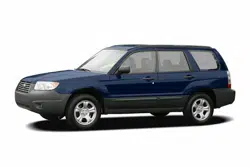Loading ...
Loading ...
Loading ...

1-36 Seat, seatbelt and SRS airbags
*SRS airbag (Supplemental
Restraint System airbag)
*SRS: This stands for supplemental re-
straint system. This name is used be-
cause the airbag system supplements the
vehicle’s seatbelts.
Your vehicle is equipped with a crash
sensing and diagnostic module, which will
record the use of the seatbelt(s) by the
driver and/or front passenger when any of
the SRS frontal and side airbags deploys.
Vehicle with driver’s and
front passenger’s SRS air-
bags and lap/shoulder re-
straints
Your vehicle is equipped with a supple-
mental restraint system in addition to a
lap/shoulder belt at each front seating po-
sition.
The supplemental restraint system (SRS)
consists of two airbag (driver’s and front
passenger’s frontal airbags) or four air-
bags (driver’s and front passenger’s fron-
tal airbags and driver’s and front passen-
ger’s side airbags).
These SRS airbags are designed only
as a supplement to the primary protec-
tion provided by the seatbelt.
The system also controls front seatbelt
pretensioners. For operation instructions
and precautions concerning the seatbelt
pretensioner, see the “Front seatbelt pre-
tensioners” section in this chapter.
y To obtain maximum protection in
the event of an accident, the driv-
er and all passengers in the vehi-
cle should always wear seatbelts
when the vehicle is moving. The
SRS airbag is designed only as a
supplement to the primary protec-
tion provided by the seatbelt. It
does not do away with the need to
fasten seatbelts. In combination
with the seatbelts, it offers the
best combined protection in case
of a serious accident.
Not wearing a seatbelt increases
the chance of severe injury or
death in a crash even when the ve-
hicle has the SRS airbag.
For instructions and precautions
concerning the seatbelt system,
see the “Seatbelts” section in this
chapter.
y Do not sit or lean unnecessarily
close to the SRS airbag. Because
the SRS airbag deploys with con-
siderable speed – faster than the
blink of an eye – and force to pro-
tect in high speed collisions, the
force of an airbag can injure an
occupant whose body is too close
to SRS airbag.
It is also important to wear your
seatbelt to help avoid injuries that
can result when the SRS airbag
contacts an occupant not in prop-
er position such as one thrown
forward during pre-accident brak-
ing.
Even when properly positioned,
there remains a possibility that an
occupant may suffer minor injury
such as abrasions and bruises to
the face or arms because of the
SRS airbag deployment force.
Loading ...
Loading ...
Loading ...
